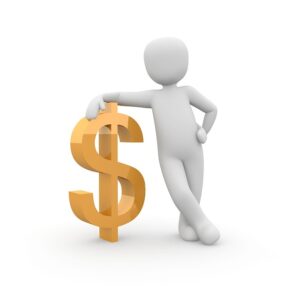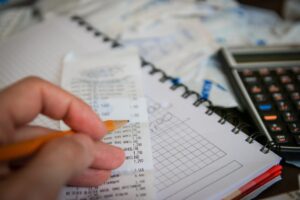What is financial fitness and how do you achieve it?
Most people are familiar with the steps it takes to be more physically fit. These steps usually include eating a healthy diet, regular exercise, annual physicals, screenings and taking medications and vaccinations as advised. But what is financial fitness? What can you do daily, weekly, monthly and annually to improve your financial fitness?
First let us start with “What is financial fitness?” It can be defined as your ability to meet your current needs, freedom to make choices that make life enjoyable, having attainable goals for the future and feeling financially secure. Just as with physical fitness goals, financial fitness goals are personal and based on your values. They are achieved by setting and adjusting daily, weekly and long-term goals. Having goals helps individuals take advantage of opportunities and avoid potholes. And like physical fitness, financial fitness will likely require planning, discipline and determination to achieve.
Daily Exercise
Write down the amount and category of every purchase you make, or save receipts for tracking at the end of the day.
Weekly Training Session
Add up all your expenses for the week by category. Start to notice trends in your spending. Adjust as needed.
 For example, if you see that eating out is adding up quickly, slow down spending in this category by making more meals at home. Consider packing a lunch for work or school, etc. Not only will this help save money, but it might also be healthier than eating out.
For example, if you see that eating out is adding up quickly, slow down spending in this category by making more meals at home. Consider packing a lunch for work or school, etc. Not only will this help save money, but it might also be healthier than eating out.
Monitor your credit charges weekly. Look for and report any charges you did not authorize.
Monthly Drills
Fill out a monthly budget tool to see how much you make and spend each month. Seeing how you did is like stepping on the scales.
Pay monthly expenses like mortgage or rent, phone, utilities, insurance, childcare, first. Then plan for how you will spend the rest of your income. This is a bit like having a menu plan for meals and being more flexible about the snacks.
 Consider planning to save some amount for emergencies as well as for upcoming annual or semi-annual expenses, such as vehicle registration, insurance, holiday expenses, etc. For myself I know that if I don’t transfer money into savings at the first of the month, it will never still be there by the end of the month. If I need these funds later in the month to make ends meet, I can always transfer the funds back into my checking account. “Out of sight out of mind” works for me, whether it is spending money or eating a chocolate chip cookie.
Consider planning to save some amount for emergencies as well as for upcoming annual or semi-annual expenses, such as vehicle registration, insurance, holiday expenses, etc. For myself I know that if I don’t transfer money into savings at the first of the month, it will never still be there by the end of the month. If I need these funds later in the month to make ends meet, I can always transfer the funds back into my checking account. “Out of sight out of mind” works for me, whether it is spending money or eating a chocolate chip cookie.
Annual Checkup
An annual financial review is much like a physical checkup. Annually review you net worth, which is an accounting of your total assets minus your total debt to be sure you are making progress toward your goals. This is also a great time to look at your goals, to be sure they reflect your personality and values. If your goals and values do not match, make some adjustments. The Consumer Protection Bureau as a free online Financial Fitness Quiz (20 questions). Answers to this quiz might help you develop goals for your immediate and long-term financial future.
To get into Financial Shape
- Spend less than you make. When trying to lose weight we are advised to consume fewer calories than we burn. This same strategy can be applied to financial health. To get in financial shape we need to spend less than we make.
- Make sure you are receiving payments, services and discounts you qualify for. This could include child support, food stamps, local food bank box, housing or utility assistance, prescription discount programs and seeing healthcare providers in your insurance network. This is like maximizing your opportunity to burn a few more calories while taking the stairs instead of the elevator.
- Shop smart.
 Look for bargains and use coupons, customer loyalty cards or membership discounts. But only buy things you need, regardless of the savings appeal. Think of this as having a piece of cake but scraping off the frosting or cutting back on the size of the piece, so that you can enjoy it while not going completely off your plan.
Look for bargains and use coupons, customer loyalty cards or membership discounts. But only buy things you need, regardless of the savings appeal. Think of this as having a piece of cake but scraping off the frosting or cutting back on the size of the piece, so that you can enjoy it while not going completely off your plan. - Pay off debt. Make minimum payments on all debt while paying the most on high interest debt. This task involves balancing current needs with future goals. Compare this task with cleaning out the pantry of unhealthy foods, and slowly replacing them with better options.
- Have a savings plan for emergencies. Start the habit of saving a small amount of money each month. Then slowly increase the amount. Think of this as increasing the amount of weight you lift or distance you walk over time.
- Have insurance to cover the risk of a large emergency, such as a car accident, health emergency, house or apartment fire or theft. Compare this to a vaccination to protect your financial health.

